Renovated Hyundai i40 Wagon review with well-known and oft-tested 134 hp engine CRDi and 7-speed automatic transmission. This combination coincides nicely with family character of the car.
Hyundai i40 Wagon highlights:
- Elegant, less than a meter and a half “low” estate does not change significantly after five years. The overall length remains the same at 477 centimeters, also the wheelbase of 277 centimeters and with more than one meter front overhang.
- As with other larger Hyundai vehicles, automatic gearbox with two clutches is also an option for the i40. Shifting is possible through the shift “ears” behind the steering wheel.
- Hyundai insists on labels LP and HP in their diesel engines, which in the case of the model i40 indicate 114 or 134 hp. With a stronger diesel engine option, Hyundai i40 Wagon does not directly attack the class leader Passat, however, it offers significantly lower price for comparable equipment.
- The list of basic “comfort”equipment package is extensive, but around 1,500 euros more expensive “style” also offers dual-zone air conditioning, alloy wheels, spare wheel, parking sensors front and rear, electric adjustment for the driver’s seat, rain sensor, wiper defroster, LED fog lamps, and much more.
- Engine: turbocharged 1.7-liter with 134 hp
- Real life fuel consumption: 6.8 l / 100 km
- Reviewed vehicle base price*: 24,700 euros
Renewed Hyundai i40 Wagon: biggest visual change is in the front grille
It gives a more aggressive look, is more open with a unified net, which is no longer halved crosswise with plastic. The shiny bottom line of the mask of the predecessor, stretched into a smile, has disappeared. Additional lights are more rationally designed. A spoiler shaped lower part of the bumper remains unchanged. Same as before, it is inviting the edging stones, which sometimes covertly drive into the car on car parks.
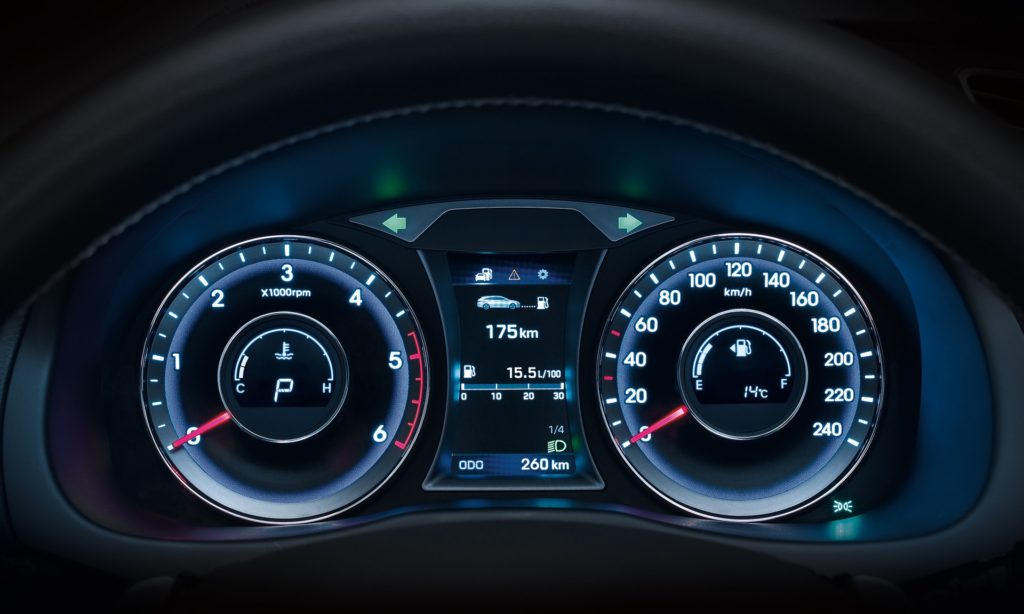
We are not sure that a horizontal display of current fuel consumption is more transparent than the previous circular.
There is nothing changed to the switches on the steering wheel crossbars, the gauges with two by two concentric circles are still interesting and transparent. The graphics on the screen has changed, but we are not sure, for example, that a horizontal display of current fuel consumption is more transparent than the previous circular.
The interior of the Hyundai i40 Wagon is beautifully designed, redecorated with surfaces covered in piano black and brushed aluminum imitation, which extends through the front door and the entire dashboard like a ribbon. The central console is ingeniously arranged in one whole an extends from the dashboard to between the front seats. It begins with a touch screen (navigation, Bluetooth, audio, media, settings) and descends past logically arranged buttons for climate control towards the gear lever.
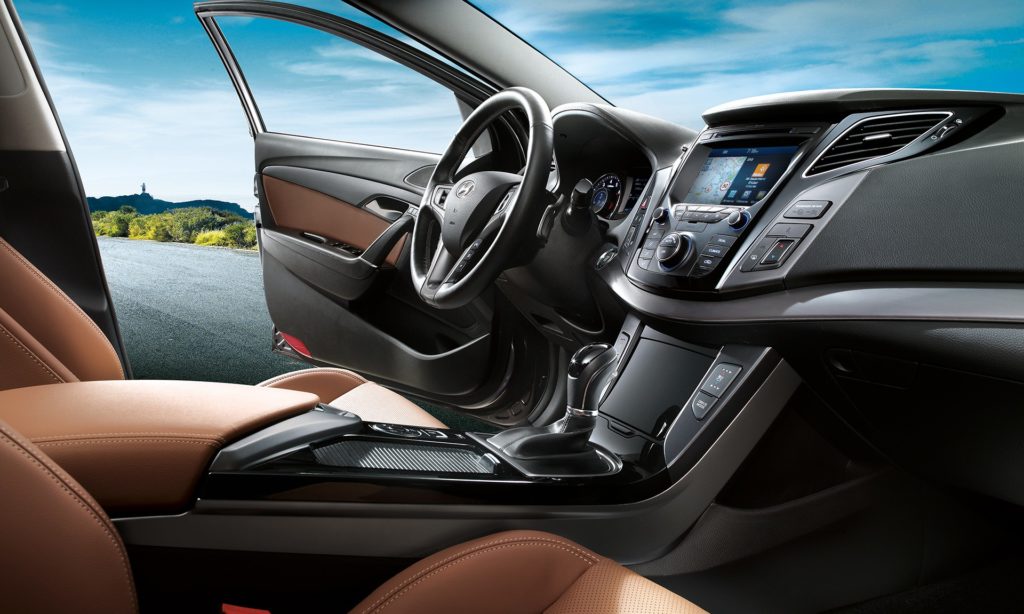
We are waiting for a brave manufacturer, who will in this price range, at least replace the soft and hard part.
In front and behind the gear lever there are two neatly made closed compartments, first with a black cap and the other with a roller shutter. Even the drawer under the arm rest, which is not only a covered hole, is usefully treated. Hyundai i40 Wagon as a vehicle for low thirty grand, of course, also offers refrigerated illuminated box and the slots for the drinks. The dashboard is soft-coated at the top, but in the lower part, which can be in contact with the passenger, traditionally hard. We are waiting for a brave manufacturer, who will in this price range, at least replace the soft and hard part.
From the rear seats point of view we emphasize that it is spacious enough for the head, shoulders and feet. In the middle, in front of the rear bench, we find the heating and ventilation unit, which befits for a Passat competitor. We like arm rest, which hides the storage holes for drinks and an extra closed drawer.
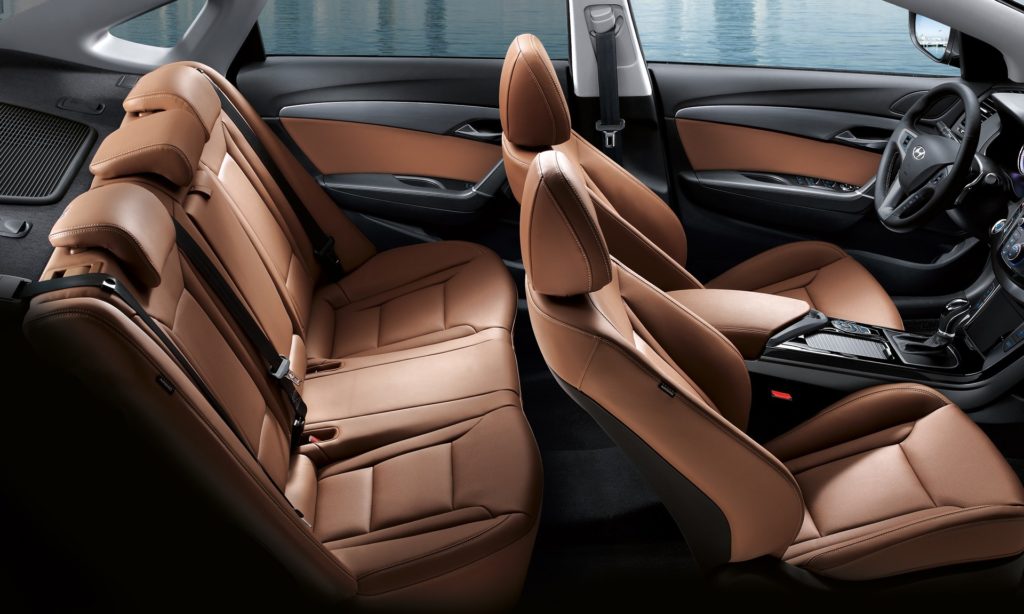
Hyundai i40 Wagon is spacious enough for the head, shoulders and feet.
An important part of Hyundai i40 Wagon is the trunk
Of course, since it is the decisive factor in the purchasing decision. In i40, there are three levels, where the base plate has three parts. It covers the sufficiently deep storages for storing the mandatory equipment, tools for changing the wheels and items, that should be hidden from thieving views in the parking lots.
Under these storages we can find the emergency spare wheel, and on both sides there are two drawers. In the cross-console behind the rear seats there is a roll to cover the luggage compartment and the safety net, which is clamped into the roof of the cabin.
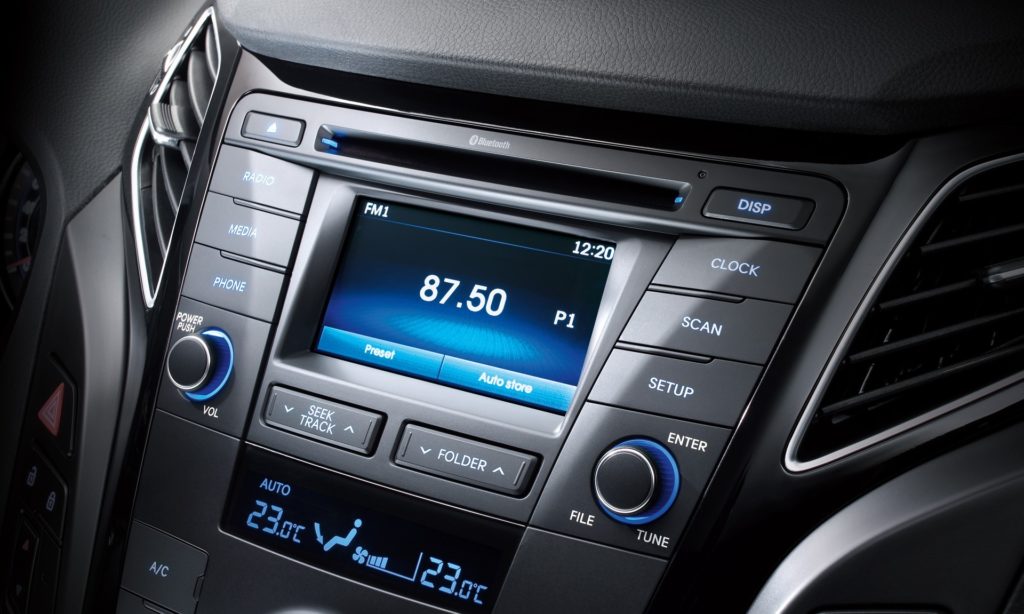
Touch screen for navigation, Bluetooth, audio, media, settings…
Auto Hold and Electric parking brake
For stops at traffic lights, Hyundai i40 Wagon is equipped with auto hold, but with no connection to the start-stop system, because this is just not built into the vehicle. Instead of using auto hold switches, you can also move the gearshift in N, especially since it is not necessary to press the brakes when re-shifting to D (in contrast to many other manufacturers).
Electric parking brake is good in two ways: by shutting down the engine it does not start up automatically (you can choose between the two options), and at starting off it automatically releases without any jolt. At least we can expect, if there should be electric.
7-speed automatic gearbox reduces top speed and increases fuel consumption
The speed of the shifting is not meteoric, but it completely corresponds to the level of athleticism that an average driver can afford in a family station wagon. During a calm accelerating the pointer of the tachometer only approximate values of 2000, when it shifts into a higher gear. Upshift is almost imperceptible, slightly more so when switching to lower gears.
The comparison of this dual clutch transmission with the manual does not show specific differences in operation, but more in the technical data. While there are no specific differences in consumption, acceleration, and top speed between the manual and DSG gearboxes, it is different at Hyundai. Particularly the urban consumption and final speed significantly differ from the values of manual transmissions. You can count on 10 km/h lower top speed and almost two liters bigger fuel consumption in the urban traffic. The difference worth considering the gearbox choice, isn’t it?
Sporty ride with a station wagon
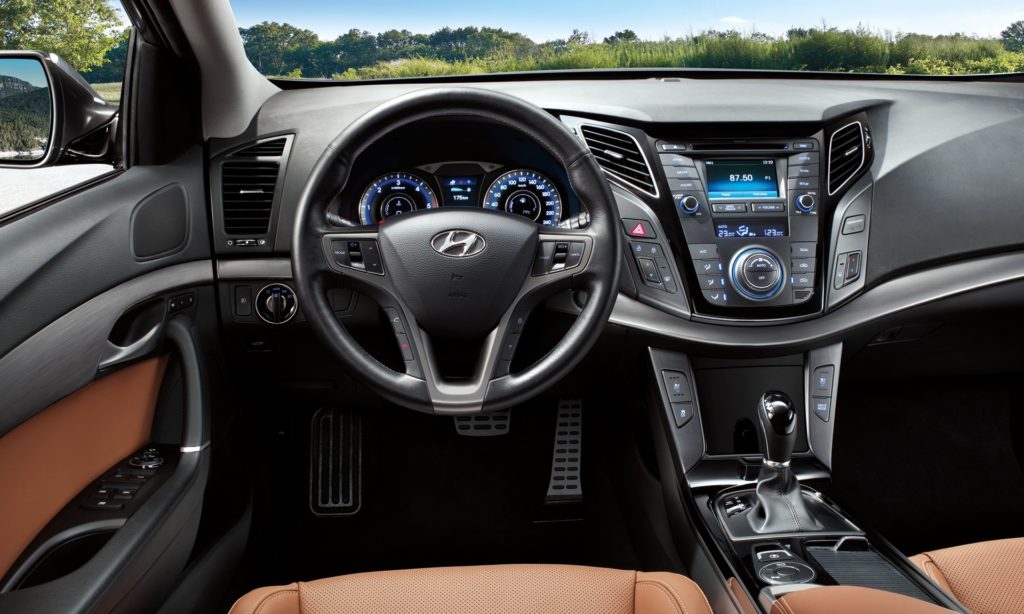
You can count on 10 km/h lower top speed and almost two liters bigger fuel consumption in the urban traffic with the automatic transmission.
The family character of the vehicle does not go along with the rapid overcoming of the road distances, but the chassis of Hyundai i40 Wagon can withstand more than the driver would expect. Even soft and comfortable coping with all the surface unevenness on the first kilometers is not raising high hopes for a sportier ride. But the chassis is completely ready for the dynamic challenges. To top it, an electronic stability system is set very liberal.
In the first slip of the front wheels ESC only slightly winks to the driver and gives him another option to step on the gas pedal. Electronics in the “sport mode” selection even allow a slight steadily sliding of all wheels. This also includes a direct steering (less than three spins “lock to lock”) and sports ‘ears’ for manual gear changes, which are rotated together with the steering wheel. In short, a lot of fun in a caravan.
The indicator advises on the manual gear selection
With manual gear selection, as an assistance for more economical driving, Hyundai i40 Wagon shows an arrow and the number of the recommended gear on a small display. Useful, as well as the fact that when the sports function is activated, the gauges list really big letter D with the number of the current gear. As in racing!
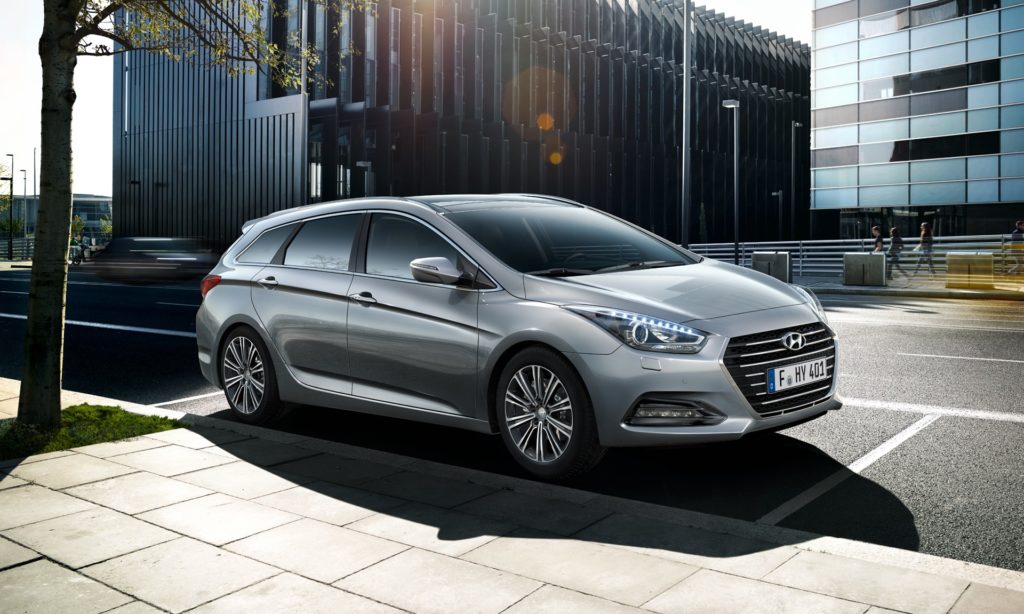
The chassis is completely ready for the dynamic challenges.
Fuel tank big enough for a thousand kilometers
With a 70-liter fuel tank a driver with a heavy foot can make journeys of 900 kilometers without refueling, more economical drivers can easily reach over 1,000 kilometers. For example, when driving at a constant speed of 130 km/h, the engine runs at approximately 2,400 rpm, and the consumption is a little under 7 liters per 100 kilometers.
Technical data: Hyundai i40 1.7 CRDi Wagon HP DCT 7 style
Vehicle class: middle class, station wagon, 5 doors, 5 seats.
Engine:
Diesel, liquid cooled, 4-cylinder, 16V.
Engine capacity: 1685 cm3.
Maximum power: 134 ps at 4000 r / min.
Maximum torque: 320 Nm at 2000 to 2500 rev / min.Transmission:
Front-wheel drive.
7-speed automatic transmission with manual shifting with the shift lever behind the steering wheel.
Tires: 205/60 R16.Dimensions, weight:
Length: 4,770 mm.
Width: 1,815 mm.
Height: 1,470 mm.
Wheelbase: 2,770 mm.
Turning circle diameter: 10.94 m.
Curb weight: 1570 kg.
Maximum permissible weight: 2120 kg.
Maximum permissible trailer weight: 700 kg (light trailer) / 1500 kg (with brakes).
Luggage compartment capacity: 553 – 1719 l.Capacity and consumption:
Maximum speed: 190 km / h.
Acceleration time from 0 to 100 km / h: 10.6 s.
Urban driving consumption: 7.2 liters / 100 km.
Open road consumption: 4.8 l / 100 km.
Combined consumption: 5,6 l / 100 km.
Average autonomy: 1,250 km.
Fuel tank capacity: 70 liters.
Emissions: 149 g CO2 / km.
Euro 6.Safety:
Front and side airbags for driver and front passenger.
Driver’s knee airbag, curtain airbags.
2x Isofix.
ABS with electronic distribution EBD and BAS braking force amplifier.
TCS traction control.
ESC.
Tyre Pressure Monitoring TPMS.
NCAP rating: 5 stars (2011).Equipment*:
16-inch alloy wheels. Roof rails. Spoiler, rear. LED fog lights. Daytime running lights. Automatic lights. LED tail lights. Solar front glass. Extra tinted rear windows. Remote central locking. Electrically operated, heated and folding mirrors with LED turn indicators. Leather steering wheel, adjustable. Electric parking brake. The driver’s seat is electrically adjustable in ten directions. Adjustable passenger seat height. Armrest, front and rear. Drive mode switch. Board Computer. Car radio with CD and MP3 player. Bluetooth. A USB port and AUX. Rain sensor. Cruise control. Hill Start assist. Parking sensors, front and rear. Camera for reversing. Automatic Dual-zone air conditioning. Electric, secure windows opening. Closed illuminated and refrigerated drawer on the front passenger side. A drawer under the shoulder between the front seats. The rear seats split in a ratio of 40/60. The drawer and the slot for a drink on the back of the rear seats. Lockers underneath the luggage compartment. The emergency spare tyre with tools. Safety net and a 12-volt power outlet in the trunk.
*Please note that the equipment list and the prices mentioned in this review may differ from country to country, check the correct data at your local dealer.
Hyundai i40 Wagon possible competitors and rivals
- Audi A4 Avant
- BMW 3-series touring
- Ford Mondeo Estate
- Mazda 6 Wagon
- Mercedes C-Class Estate
- Renault Talisman Grandtour
- Skoda Superb Combi
- Volkswagen Passat Variant
- Toyota Avensis Touring
Image credit: Hyundai
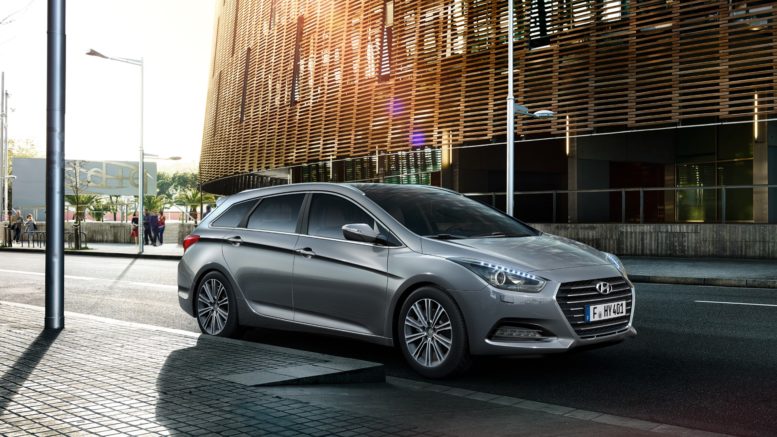

Be the first to comment on "2016 Hyundai i40 Wagon review – well-equipped and cheaper than the Germans"